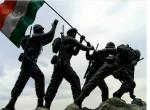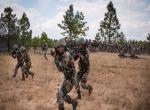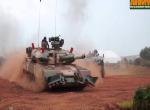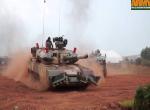Nuclear weapons based on fissionable Plutonium 239 (Pu-239) have generally to be tested because of the problem posed by the Isotope Pu-240. Pu-240 forms easily in nuclear power reactors due to the irradiation of the fuel rods containing Uranium 238. (U-238). Since Plutonium unlike Uranium is lethal because, of the radioactivity it cannot be enriched or separated in conventional technology like the gaseous centrifuges. There is no such problem with Uranium, the isotopa U-235 and U-238 can be separated in conventional enrichments plants. The US, UK, Russia, France, China and even Pakistan developed enriched Uranium bombs when they detonated nuclear devices for the first time. Pakistan however, was the only country to use gaseous centrifuges for enriching Uranium for its first nuclear device. The others dependent on gaseous diffusion Israel and India, detonated their first nuclear device based on Plutonium.
In May 1979 Israel collaborated with South Africa in testing a highly sophisticated neutron weapon based on fusion. Israel has also accepted the CTBT which India has not. What is the secret?
There is a method of 'enriching' known as the Atomic Vapor Induced Laser Separation (AVLIS). It has rarely been mentioned in the news media. Trevor Fishlock a British journalist wrote back in 1978 in the Financial Times that the AVLIS could produce nuclear bombs in the backyard. This was because weapons grade Pu-239 could be separated. Pu normally cannot be separated because of the lethal radioactivity that it emits. This is not the case with Uranium.
The need is for testing areas out of the contamination by Pu-240. If weapons grade Pu-239 can be stockpiled why test? One therefore understands why Israel is comfortable with CTBT. Israel and America collaborated in the late 1970s on the AVLIS. Israel also used lasers to fuse pellets of deuterium (heavy hydrogen) and lithium to achieve a highly sophisticated fusion bomb in collaboration with South Africa. Two flashes of light characteristic of a nuclear explosion were detected in South Atlantic in 1979. The US Navy had at that time picked up the signals, but a panel of scientific experts headed by Prof Jack Ruma of MIT had said that the Vela Satellites had mearly picked up oil flares from wells in the Soviet Union.
India had linked the CTBT to complete elimination of nuclear weapons. President Obama has favoured the idea but his goal of reaching zero nuclear weapons will face the same hurdles that the ex President Gorbachev of the former USSR and ex Prime Minister Rajiv Gandhi of India faced.
The weapon manufactures will not endorse the idea. Nuclear weapons are symbols of power and prestige in the international system, they should never have been invented nor should they have been used on Japan. Brazil, India, South Africa and China - the so called BASIC countries co-ordinated with President Obama at the climate talks held at Copenhagen from December 16-18, 2009. Their co-ordination produced a draft that was not totally satisfactory - but something is better than nothing.
Similarly the BASIC countries must press on President Obama of the USA and Medvedev of Russia to fast track the reduction of nuclear arms through the START agreements that ended in 2003. Only then can China, France, Britain and India join the talks. In remains unclear whether Israel can agree to participate in view of Iran. Testing is however necessary for reliability of warheads.
It is necessary to maximize yield to weight (y/m) ratio and put a miniaturized warhead on Agni missile and increase the range which the missile can deliver warheads.
India and China must be prepared to participate in a multilateral version of the Strategic Arms Reduction Talks (START), which is presently a bilateral one and one that is being reinvigorated by President Obama. Obama wants to drastically reduce the number of nuclear warheads and their launchers. Simultaneously India needs to maintain a minimum and credible deterrent. These are catchwords that need to be defined.
What force levels India need to maintain to deter China? China has already developed six nuclear powered submarines (SSNs) to India's one. It has also developed submarine launched ballistic missiles (SLMBs) that can deliver hydrogen bombs on targets. These SLBMs can effect deterrence of the United States and Russia, what to talk of India?
Today China is a member of the P-5 with veto powers,India remains a reluctant nuclear weapons power.
China has developed at Hefei, in Anwei province, lasers for enriching Uranium. How far its posture on CTBT is affected by this remains to be seen. In view of the fact that Chinese scientists worked with Pakistan scientists at Kahuta till December 31, 1985, on the gaseons centrifuge, one can assume as a quid pro quo, Pakistan scientists in the long run could get an access to this technology. The danger then is that they may use it to enrich Plutonium and then upgrade their system.
The status of India’s programme remains unclear. Already an article has appeared in the London based scientific journal Nature advocating a ban on laser isotope separation. In view of the pressure building up for the CTBT and FMCT it would be essential for India to perfect the AVLIS technique at the earliest.









Post new comment